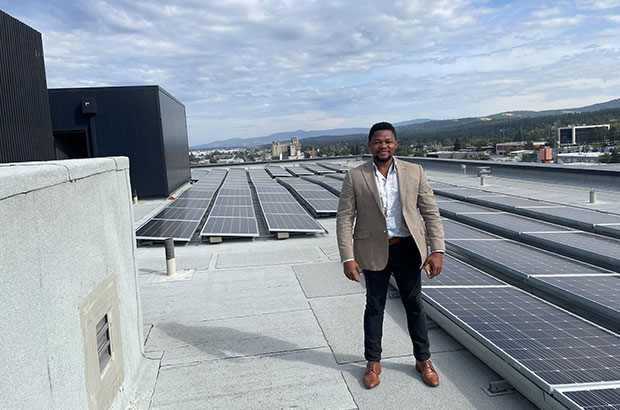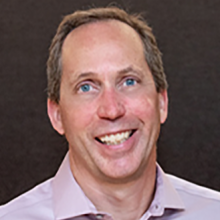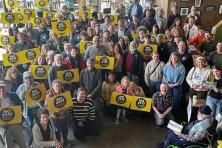Last week I had the incredible experience of joining several dozen people on a clean energy tour of Eastern Washington organized by the Clean & Prosperous Institute (CPI). I was completely blown away by the partnerships that have formed that are paving the way to some incredibly exciting projects in the region. I was equally daunted by the core challenge that pretty much everybody that we met with talked about—accessing the clean energy they need to power their operations.
For the past few years, our friends at CPI have organized annual study missions to learn from others and to bring the best ideas in clean energy innovation back to Washington. Past trips have been to Québec and California. This year we stayed closer to home to learn about what is already happening in our own state.
From visiting Spokane, Moses Lake and the Tri-Cities, some clear themes emerged.
First, partnerships for progress. We started the trip visiting Spokane’s new South Landing Eco-District. This new set of buildings is now commonly known as one of the “smartest blocks in the nation.” McKinstry, one of the nation’s leading buildings experts, teamed up with utility giant Avista to create an amazing set of interconnected buildings that house both companies as well as Eastern Washington University. They are using innovative approaches for buildings including a shared energy system across multiple buildings to drive efficiency and achieve net-energy buildings. (Pictured at top: Sphere Solar Energy CEO Edwin Wanji with a large solar array on the roof of the South Landing Eco-District.)
At Washington State University’s Tri-Cities campus we heard from students, university senior leadership, economic development professionals, and leading research players at Pacific Northwest National Lab (PNNL) about how they are working together to grow the clean energy economy there. For example, they are key partners in the billion-dollar regional hydrogen hub in the Pacific Northwest that is working to develop ways to create green hydrogen to solve the challenges of hard to decarbonize sectors like aviation, maritime, and more. They are developing partnerships between colleges, universities, and labor to develop workforce development programs to train people for the new jobs being created.
The pride of partnership and the power of the emerging clean energy economy to help to create great jobs in the region was palpable.
While much of the clean energy development in Eastern Washington has been built on decades of work, we also saw and felt how new many of these efforts are.
We toured the inner sanctum of the basement of the South Landing Eco-District building maintenance area—a large area filled with massive tanks and pipes. It was so clean that I would not have hesitated to eat the snack that I had with me if it had fallen on the floor. The equipment was gleaming.
We visited several new buildings on the sprawling PNNL campus in Richland, and they were so recently completed that they had that powerful new car smell.
We visited a huge battery manufacturing facility being built by Sila in Moses Lake, and it looked more like a giant empty warehouse than the high-tech cutting-edge facility it will be when it is fully operational in the coming years.
And we saw the relatively new Energy Northwest combined solar and storage and training project in Richland that is producing 4 megawatts of power.
We also heard over and over again that these new investments were galvanized by recent state and federal public policies. Everywhere we went, it was clear that the billions of dollars coming from the state’s Climate Commitment Act and the federal Inflation Reduction Act, among others, were essential to making so many of the great projects that we saw happen. Without those massive public investments, the equally significant private investments would never have materialized. They are making a real difference already.
The final take-away from the trip was the most sobering. There is a huge amount of opportunity for clean energy progress in Eastern Washington, everything from industrial production of new types of batteries to cutting-edge research to game-changing companies like Atlas Agro that are working to revolutionize how fertilizers are made. All of these efforts are not just dreams on a piece of paper. They are active efforts employing large numbers of people. They are happening.
But many of them may not make it across the finish line because of one reason—the lack of clean energy to power them. This theme, that there simply is not enough clean energy or transmission to move that energy to where it needs to go, came up in every single conversation that I had.
At a high level, learning that we have a challenge producing enough clean energy to meet rapidly rising demand is not new. I was well aware of the challenges of siting transmission, solar, wind, battery storage, and more. I understood that we need more clean energy to power new facilities that are manufacturing clean solutions. But talking to business leaders about the specifics of the challenges, and how their projects may not be viable if the blockages in the system are not cleared up in a timely manner, brought the issue much closer to home.
I left the tour deeply inspired by what is already emerging in Eastern Washington and where it might lead, and committed to working with many partners to unlock the blockages that are standing in the way of producing more clean energy at scale to keep the jobs flowing and the climate pollution coming down.





